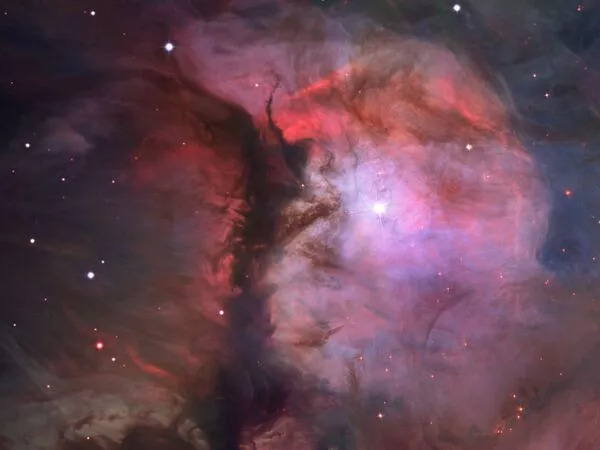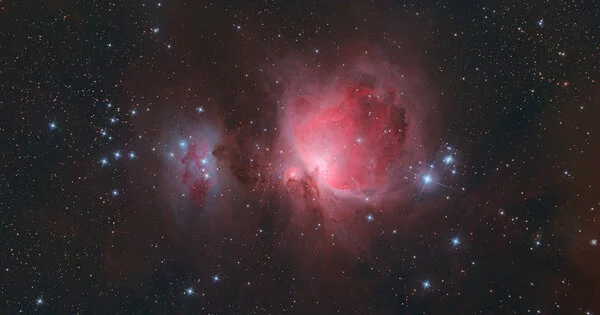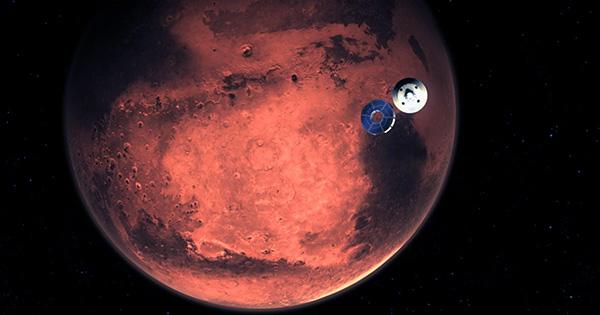Messier 43, also known as De Mairan’s Nebula and NGC 1982, is a star-forming nebula with a prominent H II region in the equatorial constellation of Orion. It is a small, distinctively shaped nebula located within the larger Orion Nebula complex. It was discovered by the French scientist Jean-Jacques Dortous de Mairan some time before 1731, then catalogued by Charles Messier in 1769. It is physically part of the Orion Nebula (Messier 42), separate from that main nebula by a dense lane of dust known as the northeast dark lane. It is part of the much larger Orion molecular cloud complex.
It is situated just north of the prominent Orion Nebula (Messier 42) in the constellation Orion. Messier 43 is considered a part of the same star-forming region as the Orion Nebula, but it appears as a separate entity due to a dark lane of dust that separates the two objects.
The main ionizing star in this nebula is HD 37061 (variable star designation NU Ori), the focus of the H II region, 1,300 ± 160 ly (400 ± 50 pc) away. This is a triple star system with the brighter component being a single-lined spectroscopic binary. The main component is a blue-white-hued B-type main-sequence star with a stellar classification of B0.5V or B1V. It has 19±7 times the mass of the Sun (M☉) and 5.7±0.8 times the Sun’s radius (R☉). It is radiating over 26,000 times the Sun’s luminosity (L☉) from its photosphere at an effective temperature of 31,000 K. It is spinning rapidly with a projected rotational velocity of around 200 km/s.

Messier 43 is classified as a reflection nebula, which means it reflects the light from nearby stars, illuminating the surrounding gas and dust. It owes its existence to the intense radiation emitted by the young, hot stars in the central region of the Orion Nebula. These stars emit high-energy ultraviolet light that causes the surrounding hydrogen gas to fluoresce, producing the characteristic blue glow.
The nebula is about 20 arcminutes across, which is roughly two-thirds the apparent size of the full Moon. It has a distinct bow-tie shape as a result of a dark obscuring dust lane intersecting the nebula. The dust lane prevents blue light from reaching us, resulting in a dark area within the nebula. Messier 43’s overall structure is intricately linked to the complex dynamics and interactions that occur throughout the Orion Nebula as a whole.
Under dark skies, Messier 43 can be seen with moderate-sized telescopes. Its proximity to the Orion Nebula makes it a popular astrophotography and visual observation target. It serves as a fascinating example of the interplay between young stars, gas, and dust in the process of stellar birth and evolution.
















